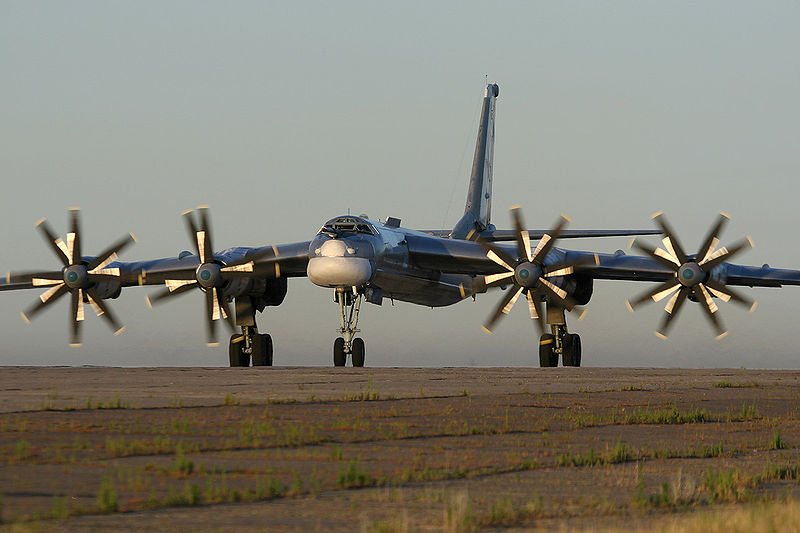
Signs of New Russian Thinking About the Military and War
Publication: Eurasia Daily Monitor Volume: 11 Issue: 28
By:

During peacetime, a key function of the General Staff, Ministry of Defense, and key components of them like the Academy of Military Sciences is to determine the nature of contemporary war and the ensuing responsibilities of the armed forces. To judge from the remarks given at the Academy’s annual meeting in late January, Russian thinking is once again in flux. Chief of Staff Valeriy Gerasimov observed on behalf of Defense Minister Sergei Shoigu that the “contradictory geopolitical situation” that has recently developed places “new heightened demands” on Russia’s defense (Interfax-AVN Online, January 27). It appears that those heightened demands encompass both military and non-military threats.
Gerasimov stressed that the crucial task of institutions like the Academy and of the General Staff is to predict and assess military and other threats to Russia and, on that basis, work out proposals for national defense. In particular, and with these non-military and military threats in mind, Gerasimov singled out the need for an “integral theory of non-direct and asymmetrical operations” that the federal authorities must implement under a single plan “in the interests of preventive neutralization” of the threats to Russian security. In this context he also noted that the General Staff’s duties are expanding (see EDM, February 11). Here he particularly singled out Russia’s theoretical response to threats emanating from Syria, Ukraine and the Arctic (Interfax, January 27). It should be noted that Syria is a potential power projection and stability operation, Ukraine could become a similar “stability- or “peace-creating” situation, and the Arctic is a pet project of President Vladimir Putin to defend against alleged threats to Russian energy (see EDM, December 16, 2013).
For Russian writers and officials, not only will contemporary and future war be a war of high-tech precision-strike complexes, it will also encompass a broad range of information warfare or even attempts at creating major economic disasters through conventional, non-nuclear, high-tech, precision strikes. This involves war from earth (or in the case of submarines underwater) to space to the digital realm. Indeed, Russia plans to create cyber warfare units by 2017 (RIA Novosti, January 30). Similarly Russia’s long-range aircraft will start using foreign airfields in 2014 to perform their missions (Interfax-AVN Online, January 22). Furthermore, writers like Konstantin Sivkov, First Vice President of the Academy of Geopolitical Problems, call for imitating the United States’ move to a global strike capability using non-nuclear missiles. This capability is ostensibly for use against terrorists, but clearly also encompasses major theater war (Voyenno-Promyshlennyi Kuryer Online, January 22). Colonel Sergei G. Chekinov (Reserve) and Lieutenant-General Sergei A. Bogdanov (Ret.), prominent writers on information operations, even argue that “non-traditional forms of armed struggle will be used to cause earthquakes, typhoons and heavy rainfall” that can damage not just the economy, but aggravate the overall socio-psychological climate in any targeted country (Military Thought, October–December 2013)
The emphasis on high-tech weapons and information operations, which may encompass broad, socio-psychological manipulation, does not make these writers outliers; rather, they are comfortably in the mainstream of Russian military thought. And their demands that the military be ready to play a more overtly “counter-revolutionary” and, perhaps increasingly, power-projection role have potentially profound repercussions. In particular, it means that future Russian combat operations may be expected to begin with a preventive information strike, not just to disable communications or infrastructure but also to incite mass socio-political upheaval through systematic propaganda. In addition, however, Putin is still calling for an emphasis on nuclear weapons and reconnaissance-communication systems, including space systems (kremlin.ru, January 22). These priorities are to be pursued on top of an already exceptionally ambitious and comprehensive modernization agenda focusing heavily on aerospace and naval systems capabilities. There is no sign that these priorities are being cut back even though it is palpably clear that the defense sector cannot meet the state’s demands (see EDM, December 10, 2013).
The huge military buildup has led, predictably, to naval demands for a fleet that can not only protect Russia but also advance Moscow’s interests in the world ocean through power projection capabilities, as in the case of the Mediterranean and Middle East regions (see EDM, February 4; Voyenno-Promyshlennyi Kuryer, January 16). But once again the gap between theory and ambition on the one hand and reality on the other is enormous. For example, although the Russian Navy claims it accepted 38 new ships for service in 2013, the actual figure is significantly lower—27 in total, including 7 combat ships, 5 auxiliaries and the rest being support vessels (Nezavisimaya Gazeta Online, January 17). Likewise, Defense Minister Shoigu had to admit to the Defense Collegium that the Russian arms industry still cannot meet government requirements, and Prosecutor-General Yuri Chayka recently reported on the continuing prevalence of widespread corruption and embezzlement throughout that sector (Ministry of Defense of the Russian Federation, January 29).
This gap between theory and ambition versus reality incentivizes the Russian Armed Forces’ continuing excessive reliance on nuclear weapons. But it also creates pressures, based on Moscow’s threat assessments of the situations in Ukraine and Syria if not the Arctic, that a systematic campaign of foreign-sponsored terrorism and/or revolution is being waged against Russia. To address these threats, Moscow believes it must react preemptively, even if only by informational means. Russian responses to Ukraine’s crisis may be illustrative of this trend. In short, military and strategic thinking in Moscow still cannot disenthrall itself from the Leninist paradigm of a Russian state under siege from its foreign interlocutors as well as those demanding reforms. Indeed, those enemies are still seen as being inextricably linked together, and as long as that remains the case, Russia will continue to see itself as threatened by a conflict with the West, if not other states.




